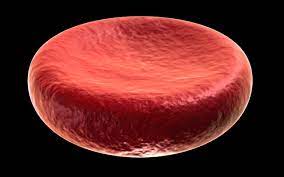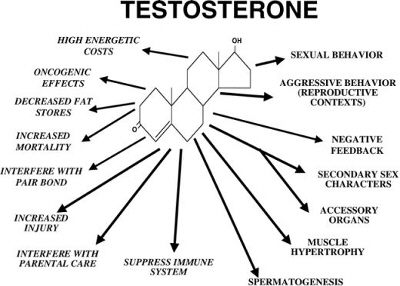Hormone Replacement Therapy > (Androgen) Testosterone Therapy
https://www.hgh.tv/testosterone/testosterone-therapy.php
The Truth about Testosterone
Although Testosterone Replacement can be a fantastic option for men diagnosed with Testosterone Deficiency, it isn't for everyone. As with any medical treatment, some potential risks are associated with treatment, especially with certain sensitive groups.
You need to think about some essential things before you begin Testosterone HRT.
Can Bio-Identical Testosterone boost my energy levels?
Yes. Testosterone plays a huge role in male metabolism and energy maintenance. If you are suffering from Testosterone Deficiency, Testosterone Replacement can and likely will lead to increased energy levels.
Can Testosterone increase my sex drive?
Yes, it can. In addition to restoring sexual function, Testosterone Replacement Therapy can also enhance libido. Testosterone is the primary hormone of male sexuality, and it can make a man psychologically ready for sex as well as physiologically.
Can Testosterone Replacement contribute to more excellent physical health?
Yes. A large segment of men that choose BioIdentical Testosterone experience changes in muscle-fat ratio due to treatment. Testosterone helps burn fat more quickly and effectively and can increase muscle mass and tone.
more quickly and effectively and can increase muscle mass and tone.
Combined with exercise and a good diet, Testosterone HRT can contribute to significant changes in physical shape.
What are the risks of Testosterone HRT?
Testosterone Replacement can lead to the development of specific side effects. Most patients do not experience symptoms that lead them to suspend therapy.
Side Effects associated with Testosterone Replacement are:
Testicular Shrinkage - Because Testosterone Replacement Therapy provides an exogenous source of Testosterone, it sometimes causes the testes to produce less Testosterone, which can lead to Testicular Shrinkage.
Decreased Sperm Count - In addition to potentially reducing the body's natural Testosterone Production, it can also disrupt the biological chain of events that lead to sperm development. Reduced Sperm Count can lead to reduced levels of fertility.
Oily Skin, or the Development of Acne - Some men experience increased oil production by the skin's pores. This increase in oil production can also lead to increased acne.
Gynecomastia - Testosterone Hormone Replacement Therapy can lead to increased breast size. This is because if the body receives too much Testosterone, it begins to convert some of that Testosterone into Estrogen, which can cause tissue in the chest to grow abnormally.
Increased Red Blood Cell Production - Testosterone Replacement has been found to increase the propagation of Red Blood Cells. This can increase the risk of stroke and heart attack for at-risk patients. This symptom often occurs with Testosterone Injection Therapy, and at-risk patients should consider other forms of Testosterone Replacement, such as creams or patches.
Besides increased Red Blood Cell Count, all of the above symptoms are generally the result of a slight overdose, and they can all be corrected or mitigated by changing the dosage. All of the above symptoms are also entirely reversible.
Who should choose to avoid Low-T Treatment with Testosterone Replacement Therapy?
The Endocrine Society has well-defined regulations regarding who should and should not consider Testosterone Replacement Therapy. Regarding the current body of medical knowledge, Society recommends against Testosterone Replacement in patients afflicted with Breast Cancer or Prostate Cancer. Patients at high risk for either of these diseases should be cautious when considering this treatment.
Several recent studies infer that men who have experienced Prostate Cancer but have been treated successfully can still use Testosterone Replacement Therapy safely. For these patients, it is vitally important that they are monitored closely for changes in health.
Before any man chooses Testosterone Replacement Therapy, they should speak openly with a physician to properly assess any potential cancer risk.
Some medical conditions may interact poorly with Testosterone Replacement Therapy. Some patients may still be recommended for Testosterone Replacement, but it is essential to proceed with care in these instances:
Abnormally High Red Blood Cell Production - Patients with naturally high RBC Counts are at increased risk of stroke and heart attack. Testosterone Replacement can increase the risk of complications.
Congestive Heart Failure - Although there is evidence that patients with mild to moderate Congestive Heart Failure can benefit from Testosterone, those experiencing severe heart failure are recommended to avoid Testosterone HRT.
Benign Prostatic Hyperplasia or other issues with the urinary tract - In some cases, Testosterone Replacement Therapy can increase the severity of problems such as difficulty urinating associated with BPH and other urinary tract issues.
Sleep Apnea - Although Testosterone can be a practical aspect of Sleep Apnea Treatment, Increased Testosterone can complicate untreated Sleep Apnea. Before turning to Testosterone Replacement, treating any underlying issues related to Sleep Apnea is vital.
Apnea. Before turning to Testosterone Replacement, treating any underlying issues related to Sleep Apnea is vital.
Is Testosterone HRT an Effective Erectile Dysfunction Treatment?
Yes, for many patients. Although Testosterone Deficiency is not the only reason Erectile Dysfunction occurs, it can be the most effective way to treat the issue, especially for men with Clinically Low Testosterone Levels.
By restoring Normal Testosterone Production, you can restore normal sexual arousal and also increase libido significantly. When discussing Erectile Dysfunction with your doctor, be sure to discuss the whole story so that he or she can consider the most effective means to treat your medical condition.
How is Testosterone Administered to Treat Low-T?
There are a number of different means to perform Testosterone Replacement Therapy. Each treatment has its benefits and drawbacks, and it's up to you and your doctor to decide what's best for you. The following are common Low-T Treatments Available today:
Testosterone Gels are probably the most straightforward way to perform Testosterone Replacement. These Gels or creams are applied once daily, generally to concealed or semi-concealed areas such as the underarms, shoulders, or abdomen.
Avoid applying Testosterone directly to the testicles because this can increase the chance that your treatment inhibits your body's natural ability to produce the hormone.
Also, because Testosterone Gels are delivered directly upon the skin, protecting others from making contact with the treated area, especially women and children, is essential.
Testosterone Patches - Patches work like gels: They provide Testosterone slowly throughout the day. Like Testosterone Gels, treatment is generally intended to be applied daily and simultaneously.
Patches are great for patients that don't want to deal with the risks involved with Gel Application of Testosterone but still want to apply treatment simply and easily. The biggest problem with Testosterone Patches is that they are more likely to cause skin irritation than Testosterone Gels.
Testosterone Buccal Patches - Buccal Testosterone is delivered in the form of a small patch placed on the upper gums, above either the left or right incisor. This form of Testosterone Treatment is straightforward to conceal, and there is no risk of contaminating others with Testosterone.
Anyone that smokes or has issues with gum disease or gingivitis should not use this method because some patients experience irritation. In some cases, it may lead to or contribute to gum disease. This risk is only considered mild and not severe.
Testosterone Injections - This was the original form of Bio-Identical Testosterone adapted for medical use. Testosterone Shots are still trendy today, even though they are the most labor-intensive form of Testosterone Administration.
The most significant benefit of Testosterone Injections is that many formulations stay active in the body for a long time. Testosterone Cypionate, for example, only requires injections once per week. Injectable Testosterone is formulated in specific ways that slow down the rate at which the body metabolizes them.
Most are formulated as ester compounds, which means that the Testosterone Molecules are combined with Esters, which break down at specific rates dependent upon their structure, making Testosterone Injections incredibly versatile.
There are a few drawbacks to Testosterone Deficiency, however. As mentioned earlier, Testosterone Injections can lead to increased Red Blood Cell count, which can contribute to specific health conditions, especially in at-risk groups. Another drawback is obvious: many men simply aren't comfortable with a pattern of routine injections if it can be avoided. A third drawback is that administration can sometimes lead to irritation and discomfort at the injection site.
Testosterone Sprays - The most notable form of Spray Testosterone is Axiron. This form of Testosterone is similar to a Testosterone Gel but is delivered in the form of a spray. Generally, Testosterone Sprays are delivered to the armpit and can be a simple and effective way to deliver the medication.
Testosterone Sprays have the same issues as the Gel form of Testosterone. They can lead to skin irritation in some patients, and patients must consciously avoid exposing others to the treated area before a sufficient time has passed or before the treatment has been washed off.
Testosterone Dermal Pellets - For patients that simply want to live their lives without thinking about medicating themselves with Testosterone, Subcutaneous Testosterone Pellets may be the best option. In this form of Testosterone Replacement Therapy, a physician will surgically implant Testosterone Pellets just below the top layers of the skin.
Many men love it because a single administration lasts three to six months, dwarfing even the weekly or bi-monthly injections associated with Testosterone Injection Treatment.
Although this treatment is incredibly effective, it is the most invasive form of Testosterone Replacement Therapy. To start therapy, you must undergo surgery to administer the pellets. This surgery is minor, but it may still convince you to turn to a less invasive form of treatment.
How should I be Monitored while taking Testosterone?
Out-patient treatment is relatively simple regarding Testosterone Hormone Replacement Therapy. After you begin your initial treatments, you must visit your physician after three and six months of therapy to monitor how your body responds to treatment. If your Testosterone Levels appear healthy and there are no significant side effects, you can sustain treatment safely.
After these three initial visits to the doctor in the first six months, you will visit your doctor annually around the anniversary of your first treatment to assess your health.
If, after any of these visits to the doctor, it appears that your T-Levels remain abnormally low, your doctor may recommend increasing your Testosterone  Dosage. In addition, Red Blood Cell counts will be monitored with every checkup.
Dosage. In addition, Red Blood Cell counts will be monitored with every checkup.
If you showed signs of Osteoporosis when you began Testosterone Treatment, your physician would begin monitoring your Bone Mineral Density at some point between one and two years of therapy.
In addition to all this, your physician will counsel you regarding prostate cancer risk so that you may maximize the benefits of therapy while minimizing the risk of prostate cancer.
Current studies indicate that Testosterone Replacement Therapy probably does not increase the risk of Prostate and breast cancer risk. Still, it may exacerbate the cancers after they appear, which is why this regular monitoring and risk management is critical.
How long is it necessary to use Testosterone HRT?
Unfortunately, Testosterone Hormone Replacement Therapy is not a cure for physiologically low Testosterone Levels. However, Testosterone HRT is a highly effective treatment for restoring your normal Free and Bio-Available Testosterone Levels so that you have the Testosterone your body needs to function as if your Testosterone Production were average.
This does mean that the benefits of Testosterone Replacement begin to fade in the months and years after successful treatment.
Do You Think Testosterone is Right for You?
Testosterone Replacement Therapy is a fantastic treatment option that offers numerous benefits for aging men. Some women may even benefit from Testosterone Hormone Replacement.
Suppose you feel that Low-T is harming the way you live your life. In that case, we encourage you to contact a medical professional like those at the Conscious Evolution Institute to take an essential first step to restore more excellent health and vitality to your life!
Video Link: https://vimeo.com/183549368
Video Download: The Facts And Myths Of Testosterone Hormone Replacement
Video Stream: The Facts And Myths Of Testosterone Hormone Replacement

- What Are Normal Testosterone Levels For Men And Women Throughout Life? [Last Updated On: March 14th, 2024] [Originally Added On: May 26th, 2020]
- Top Tips For Boosting Testosterone Naturally [Last Updated On: November 6th, 2024] [Originally Added On: May 27th, 2020]
- The Testosterone Factor [Last Updated On: September 17th, 2023] [Originally Added On: May 28th, 2020]
- Testosterone Can Help Relieve The Menopause Symptom Of Hot Flashes [Last Updated On: March 13th, 2024] [Originally Added On: May 29th, 2020]
- How Does Low Testosterone Cause Infertility? [Last Updated On: March 1st, 2024] [Originally Added On: May 30th, 2020]
- The Benefits Of Testosterone Therapy For Prostate Cancer [Last Updated On: March 12th, 2024] [Originally Added On: May 31st, 2020]
- Is Testosterone Replacement A Valid Diabetes Treatment? [Last Updated On: April 6th, 2024] [Originally Added On: June 1st, 2020]
- Testosterone Shock Therapy May Be An Effective Prostate Cancer Treatment [Last Updated On: March 1st, 2024] [Originally Added On: June 2nd, 2020]
- Testosterone Replacement Therapy Is Safe For The Heart [Last Updated On: March 11th, 2024] [Originally Added On: June 3rd, 2020]
- Testosterone Replacement Therapy [Last Updated On: July 6th, 2023] [Originally Added On: June 4th, 2020]
- Testosterone Patches [Last Updated On: March 1st, 2024] [Originally Added On: June 5th, 2020]
- Testosterone Overview [Last Updated On: March 10th, 2024] [Originally Added On: June 6th, 2020]
- Testosterone Levels And Making Money [Last Updated On: October 19th, 2024] [Originally Added On: June 7th, 2020]
- Testosterone Enanthate [Last Updated On: October 18th, 2024] [Originally Added On: June 8th, 2020]
- Increased Awareness Of Low-t Helps Men Live Healthier Lives [Last Updated On: March 1st, 2024] [Originally Added On: June 9th, 2020]
- How Does Low-t Lead To Erectile Dysfunction? [Last Updated On: March 1st, 2024] [Originally Added On: June 10th, 2020]
- Testosterone Basics [Last Updated On: March 1st, 2024] [Originally Added On: June 11th, 2020]
- How Does Testosterone Impact Prostate Health? [Last Updated On: March 1st, 2024] [Originally Added On: June 12th, 2020]
- Testosterone And Other Sex Hormones Impact Asthma Response Dependent On Sex [Last Updated On: March 1st, 2024] [Originally Added On: June 13th, 2020]
- Recognizing Subtle Symptoms Of Testosterone Deficiency [Last Updated On: March 1st, 2024] [Originally Added On: June 15th, 2020]
- Testosterone Trivia [Last Updated On: March 1st, 2024] [Originally Added On: June 16th, 2020]
- The Health Benefits Of Testosterone And Sleep Are Interconnected [Last Updated On: March 1st, 2024] [Originally Added On: June 17th, 2020]
- How Can I Restore My Testosterone Production Naturally? [Last Updated On: October 13th, 2024] [Originally Added On: June 18th, 2020]
- Low-t Quiz [Last Updated On: October 12th, 2024] [Originally Added On: June 19th, 2020]
- Low Testosterone Might Mean Poor Sleep Need Testosterone Hormone Injections [Last Updated On: October 11th, 2024] [Originally Added On: June 20th, 2020]
- Low Testosterone Contributes To Frailty With Age [Last Updated On: October 10th, 2024] [Originally Added On: June 21st, 2020]
- Low Testosterone Affects A Third Of Young Men With Type 2 Diabetes [Last Updated On: October 9th, 2024] [Originally Added On: June 22nd, 2020]
- Japanese Testosterone Study Proves Physical And Psychological Benefits [Last Updated On: October 8th, 2024] [Originally Added On: June 23rd, 2020]
- Intramuscular Injections Are Safer Procedures [Last Updated On: October 7th, 2024] [Originally Added On: June 24th, 2020]
- Injecting Testosterone (im) [Last Updated On: July 6th, 2023] [Originally Added On: June 25th, 2020]
- Injectable Testosterone And Testosterone Cream [Last Updated On: April 6th, 2024] [Originally Added On: June 26th, 2020]
- Indiana Jones Vs. Rambo (hgh Testosterone) [Last Updated On: October 6th, 2024] [Originally Added On: June 27th, 2020]
- How Much Does Testosterone Control Men's Behavior? [Last Updated On: October 5th, 2024] [Originally Added On: June 28th, 2020]
- Getting To The Bottom Of Low-t Under-reported Sources Of Testosterone Deficiency [Last Updated On: March 15th, 2024] [Originally Added On: June 29th, 2020]
- How To Manage And Overcome Testosterone Deficiency [Last Updated On: October 4th, 2024] [Originally Added On: June 30th, 2020]
- Clomiphene Low-testosterone Andropause Treatment [Last Updated On: March 1st, 2024] [Originally Added On: July 1st, 2020]
- How Do Synthetic Chemicals Impact Testosterone Secretion? [Last Updated On: September 26th, 2024] [Originally Added On: July 2nd, 2020]
- Interest In Bio-identical Testosterone Is Skyrocketing [Last Updated On: October 3rd, 2024] [Originally Added On: July 3rd, 2020]
- Axiron Spray-application Testosterone Replacement Therapy [Last Updated On: October 2nd, 2024] [Originally Added On: July 4th, 2020]
- Andropause: Male Menopause [Last Updated On: October 24th, 2024] [Originally Added On: July 5th, 2020]
- Testosterone Deficiency Treatment Options [Last Updated On: September 29th, 2024] [Originally Added On: July 6th, 2020]
- The Facts About Testosterone Hrt For Low-t [Last Updated On: September 30th, 2024] [Originally Added On: July 7th, 2020]
- Misconceptions About Testosterone Replacement Therapy [Last Updated On: October 1st, 2024] [Originally Added On: July 8th, 2020]
- Testosterone Injections For Testosterone Deficiency [Last Updated On: September 18th, 2022] [Originally Added On: July 10th, 2020]
- Testosterone Replacement Therapy May Help Aging Males Prevent Diabetes [Last Updated On: September 27th, 2024] [Originally Added On: July 11th, 2020]
- The Benefits Of Testosterone Replacement Therapy For Women [Last Updated On: September 25th, 2024] [Originally Added On: July 13th, 2020]
- How Can Testosterone Hrt Improve My Life Via Quality Low-t Treatments [Last Updated On: October 22nd, 2024] [Originally Added On: July 14th, 2020]
- Frequently Asked Questions About Testosterone [Last Updated On: September 28th, 2024] [Originally Added On: July 15th, 2020]
- Bio-identical Testosterone Cypionate Injections [Last Updated On: September 24th, 2024] [Originally Added On: July 16th, 2020]
- All About Testosterone Creams [Last Updated On: September 21st, 2024] [Originally Added On: July 17th, 2020]
- Low Testosterone Treatment Protocols [Last Updated On: July 1st, 2024] [Originally Added On: July 19th, 2020]
- Testosterone Deficiency Drains Your Energy [Last Updated On: March 9th, 2024] [Originally Added On: July 21st, 2020]
- What Is Testosterone? [Last Updated On: September 19th, 2024] [Originally Added On: July 23rd, 2020]
- Eleven Signs Of Testosterone Deficiency [Last Updated On: June 29th, 2024] [Originally Added On: July 26th, 2020]
- Hypertension-Associated Cardiovascular Risks Increase Due To Both Low-T And High Testosterone [Last Updated On: April 17th, 2024] [Originally Added On: April 22nd, 2021]
- Everything to Know About Androgel [Last Updated On: June 26th, 2024] [Originally Added On: July 8th, 2021]
- Kinds of Testosterone Therapy – Which Is Right for You? [Last Updated On: June 20th, 2024] [Originally Added On: August 28th, 2021]
- This Study Says High Protein Diet May Suppress Testosterone Levels [Last Updated On: May 22nd, 2024] [Originally Added On: March 28th, 2022]
- Testosterone and Estrogen Deficiency Associated With Increased Risk of Rotator Cuff Surgery [Last Updated On: April 6th, 2024] [Originally Added On: April 26th, 2022]
- Low Testosterone Accelerates Aging [Last Updated On: June 19th, 2024] [Originally Added On: May 3rd, 2022]
- Low Testosterone Endangers Your Health [Last Updated On: April 6th, 2024] [Originally Added On: May 14th, 2022]
- Testosterone Helps Modulate Immune Activity in the Digestive System [Last Updated On: April 6th, 2024] [Originally Added On: May 18th, 2022]
- Did you know: Testosterone treats depression! [Last Updated On: December 25th, 2023] [Originally Added On: May 19th, 2022]
- Benefits of Fenugreek – Boost Testosterone and More [Last Updated On: April 6th, 2024] [Originally Added On: May 23rd, 2022]
- Testicle Tanning: What is Tucker Carlson Talking About? [Last Updated On: July 17th, 2024] [Originally Added On: June 3rd, 2022]
- Using Testosterone to Combat Memory Issues in Diabetics [Last Updated On: April 6th, 2024] [Originally Added On: August 16th, 2022]
- About 40% of Men Have Low-T – and it Doubles the Risk of Severe COVID [Last Updated On: May 28th, 2024] [Originally Added On: September 21st, 2022]
- The Foods To Boost Your Testosterone…And The Foods To Avoid [Last Updated On: December 25th, 2023] [Originally Added On: September 30th, 2022]
- Tlando Testosterone: An Innovative Oral Therapy for Low-T [Last Updated On: December 25th, 2023] [Originally Added On: October 1st, 2022]
- Testosterone Replacement Therapy (TRT) Explained [Last Updated On: July 9th, 2024] [Originally Added On: October 12th, 2022]
- Examining The Link Between Testosterone and Employability [Last Updated On: April 27th, 2024] [Originally Added On: November 8th, 2022]
- Standard Measure of Low Testosterone Doesn't Apply to Young Men [Last Updated On: June 10th, 2024] [Originally Added On: November 8th, 2022]
- Surprising Things that Cause Men’s Crashing Testosterone [Last Updated On: June 16th, 2024] [Originally Added On: January 5th, 2023]
Word Count: 1957







